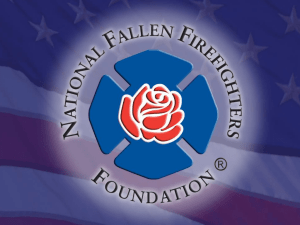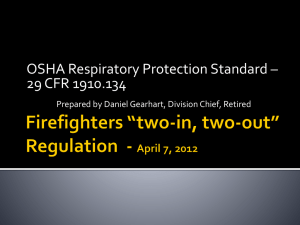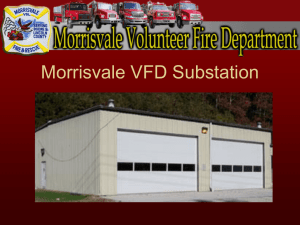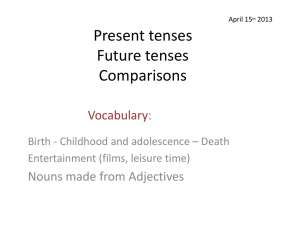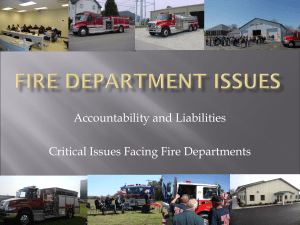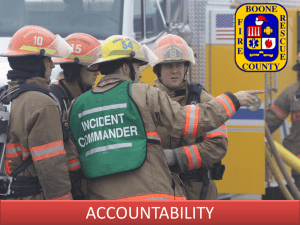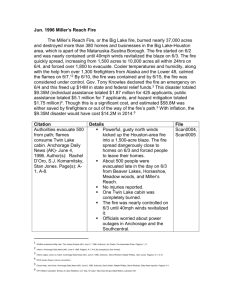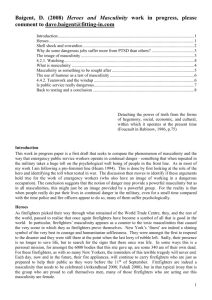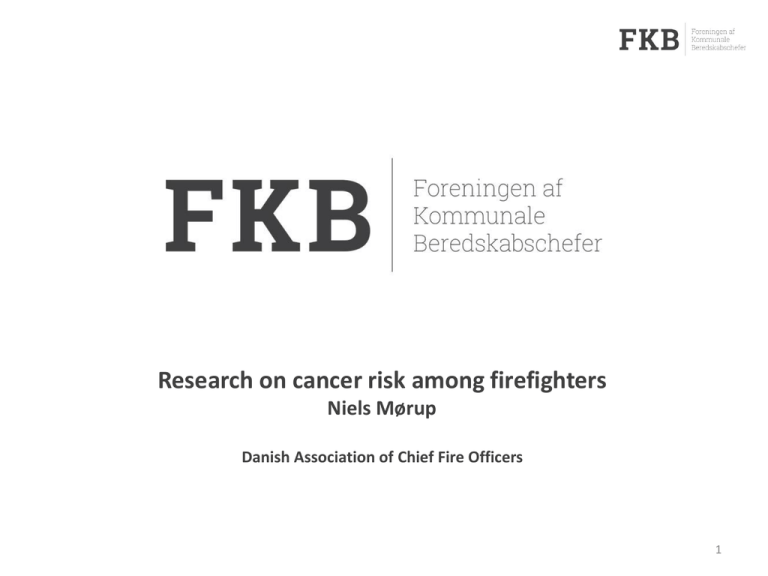
Research on cancer risk among firefighters
Niels Mørup
Danish Association of Chief Fire Officers
1
Agenda
• Focus in Denmark
• Evidens
• What can the fire brigades do?
2
Cancer risk among firefighters
•
•
•
International research shows indication of an increased risk of
contracting especially 3 types of cancer among firefighters.
International research indicates that impacts derived from the work of
firefighters could have a carcinogenic effect.
Examples of impacts:
Smoke derived from fires
Benzene, 1,4-butadien, formaldehyde etc.
Exhausts from diesel engines
Building materials, such as
Asbestos, quartz, etc.
Working night shifts
circadian rhythm disorder
3
Cancer risk among firefighters
IARC Classifications
International Agency for Research on Cancer (WHO)
Group 1
Carcinogenic to humans
Group 2A
Probably carcinogenic to humans
Group 2B
Possibly carcinogenic to humans
Group 3
Not classifiable as to its carcinogenicity to humans
Group 4
Probably not carcinogenic to humans
4
Cancer risk among firefighters
• Particles with carcinogenic effects could be harmful for a long period after
a fire.
• Many of the particles will remain on the surface of protective clothing and
equipment. The impact after exposure will not only be through inhalation,
but also through the skin and by lack of hygienic practices.
• It takes typically 20-50 years from time of exposure to a carcinogen until
the cancer is diagnosed.
• The time span between carcinogen exposure and contracting cancer
makes it difficult to make a link to impacts related to fire fighting. Often
cancer develops not just from one exposure, but from many different
impacts.
5
Cancer risk among firefighters
• Today, the cause of 30 to 50% of all cancers are known. This means that
the cause of about 50% are still unknown.
• It is estimated that 4-5% of all cancers are caused by exposures in the
work environment.
• Studies indicate that there could be a potentially higher risk among
firefighters (IARC group 2B) of contracting especially three types of cancer,
namely:
– Testicular cancer
– Prostate cancer
– Non-Hodgkin's Lymphoma
6
Cancer risk among firefighters
• There is no reliable documentation whether this effect is due to the
work of firefighting or other unknown elements in or outside the work
environment.
• The traditional so-called lifestyle factors such as smoking and alcohol
consumption are undocumented or not suspected to be the cause of
these three types of cancer.
7
In Denmark
• Act no. 422 Workers' Compensation (2005): All employers
MUST have insurance
• The National Board of Industrial Injuries in Denmark regulation:
– All doctors and dentists must report on suspension of work
related injury or illness
– Objective: a) Knowledge, b) Compensation
– Recognition: “Impacts of work environments that make
disease likely”
• Minister of Labour promised this year to start new research
about the connection between firefighting and cancer
8
In Denmark
• Giving the benefit of doubt: Make sure that firefighters are
well protected to exposure
• Cooperation between the large fire services, the unions, FKB,
Falck, and DEMA
• Good preventive behavior – avoid getting cancer being a
firefighter
9
Good preventive behavior
•
•
•
•
•
•
•
•
Fire and cancer – what we know
Good preventive behavior – how so?
Before responding to a fire call
During responding to a fire call
After responding to a fire call
Recommendations… As a workplace
Recommendations… As management
Recommendations… As a crew
10
Good preventive behavior
Before a fire call
During a fire call
After a fire call
• Procedures and guidelines
• Culture
• Equipment
• Clothing
• Equipment
• Behavior
• Cleaning
• Extra equipment
• Operations
11
Before responding to a fire call
• Make sure you understand the scope and guidelines for
responding to a fire call
• Talk about how you will protect yourself and each other onscene
• Make sure all new employees know how things work in your
crew
• Have a talk with the management about the necessary scoping
and equipment you need available in order to carry out the task
at hand - in a safe and healthy environment
• Make sure you have clean and proper equipment ready before
responding to a fire call
• Make sure you are mentally and physically ready to be included
in the response unit
12
During response to a fire call
• Use protective gear at all times – even while handling re-flashes
• Clean your fire equipment before going back to the station house
• Change into clean clothing before leaving the scene if your
turnout gear is filthy
• Never get into your fire engine if your turnout gear is filthy
• Use filter masks and disposable gloves when you dispose of your
fireman suit in a hot water soluble bag and clean the equipment
• Make an agreement in your unit that it is legit to tell each other
in case you forget certain procedures or supplies
• Make sure that you keep a proper personal hygiene before eating
on-scene
• Wash yourself off if you take a break – even if it is just a short
break
13
After responding to a fire call
• Hand over your filthy equipment for cleaning as
soon as possible
• Do not wear your filthy turnout gear while sitting
in any rooms where people either sleep, eat or
stay in general
• Always use gloves and filter masks when you are
in contact with filthy equipment – both fire
engines, protective gear and clothing
• Take a shower as soon as possible after
responding to an incident
14
Take care for yourself
• As a firefighter you are at risk of getting cancer
later in life, but you can do a lot to prevent
getting cancer. In fact, having a preventive
behavior before, during and after responding
to a fire call is essential.
15
FEU Web
• Pocket card
• The description on good preventive behavior
• The presentation
16
17




